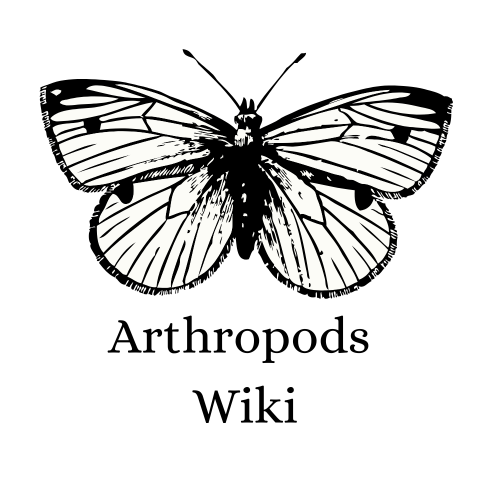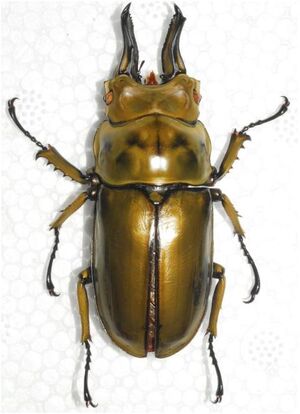|
Allotopus
| |
|
Kingdom
|
Animalia
|
|
Rank
|
|
|
Allotopus
| |
The genus Allotopus compromises of Lucanids (Stag beetles) From the order Coleoptera. There are 2 extant species alongside several other notable sub-species. Allotopus may refer to either Allotopus rosenbergi or Allotopus moellenkampi.
Morphology[]
Both species have a truly stunning appearance with a burnished golden exoskeleton and glistening iridescent covering their bodies, Both species have Tibia and Tarsus adorned with needle-edged thorns for protection and double-pronged claws. The entire exoskeleton is coated with a shine. Their iridescently bright metallic exoskeleton's colors depict on the propagation of light and the direction through which light falls on their bodies. Their lovely appearance surely does make them one of the most widely known insects among collectors. Both species have a brass and copper colored veined wings and irregularly curved "Horns" They both either have a measurement for about 4-8 centimeters however Allotopus moellenkampi out bests the average height of Allotopus rosenbergi with an +1 centimeter being 9 cm at max with a larger pair of "Horns" Allotopus rosenbergi has shorter horns and a pure-golden gradient exoskeleton. Allotopus moellenkampi however has larger and wider "Horns" and 2-3 marks on the forehead.
Behavior[]
Metabolism[]
The larvae require wood for burrowing into that has been infested with a special kind of kinshi fungus, A white inedible fungus that commonly infest on rotting wood, the fungus is widespread in several countries however is primarily cultivated in Japan and Taiwan. Not much is known about their current behavior till this date.
Distribution[]
Both species are commonly found in south-east Asia including the wide tropical range from Columbia all the way to Indonesia along with a regional distribution in Thailand, Myanmar, South-West China and Eastern India with their Most common appearances being spotted in Several parts of Indonesia. These tropical forest dwelling beetles are quite rare to find respective to their secretive habitat.

